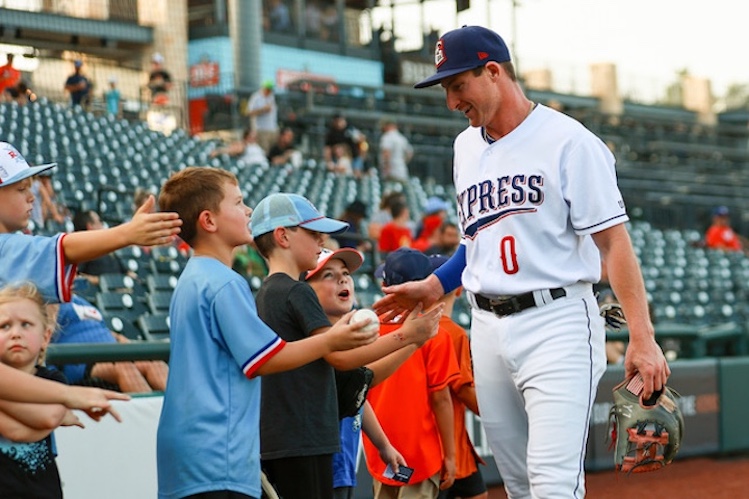
Baseball’s minor league teams allow young boys (and girls) on the field to seek autographs from young players. Both the boys and the minor league players hope to play on a major league team someday.
It’s a sunny, mild evening in late September, perfect Indian summer weather to watch a baseball game in Alabama. The Birmingham Barons are battling cross-state rivals the Montgomery Biscuits in the post-season finals of Minor League Baseball’s Southern League. The playoff series is a bonus for fans, another chance to enjoy the crack of a bat hitting the ball long and fair, the razzle-dazzle of the big-screen scoreboard, the cheerleading of the Barons’ dog-suited mascot, Babe Ruff. The handsome home field, a utilitarian steel-and-brick design with an airy concourse, reflects Birmingham’s gritty industrial roots. As usual, a fairground air prevails as people relax with family and friends, keep an eye on the game as they watch their kids run around the play area, nosh on pizza or barbecue and down a few cold beers. Reveling in the festive vibe, local fans are delighted when the Barons win. The team would be victorious in the finals and become champions of the Southern League, which has been their home since it began in 1885.
Baseball draws together all generations and classes in the timeless celebration of the game known as America’s Pastime. Stadium screens may pulsate with pixels, but baseball remains proudly analog, played by rules largely codified in the 1800s. Americans learn them at an early age, as players and spectators. That familiarity and sense of continuity fuel the game’s widespread popularity.
The lodestar, of course, is Major League Baseball (MLB), with its grand, big-city stadiums and lucrative TV deals. A longtime big-league fan, Aaron Bernstein held season tickets at the Baltimore Orioles’ home park, Camden Yards, where he introduced his two children to the game. When the family moved to south Florida, he started taking them to Miami Marlins games. Then he discovered a closer, cheaper alternative: the Palm Beach Cardinals, one of the so-called farm teams where the majors cultivate future players.
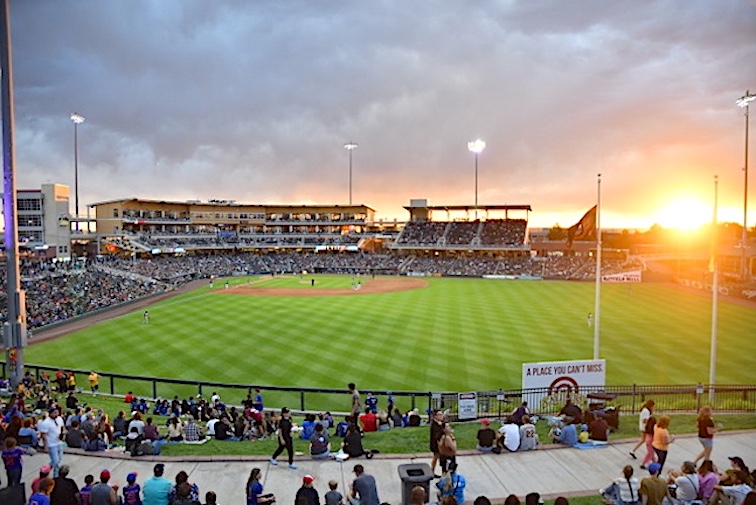
Minor league games are relaxed. Families can sit in the grandstand or sprawl on the grass and watch their children wander about.
Better Food, Cheaper Tickets, Friendly Crowds
These minor league teams, some with long histories, play in smaller, more intimate ballparks. With less distance between players and fans, the experience evokes a halcyon past.
The Cardinals’ home, Roger Dean Chevrolet Stadium in Jupiter, seats 6,800; compare that to the Marlins’ 37,000-capacity Miami home. “At a game in a smaller park, everything is more relaxed,” Bernstein says. “We like to sit behind the dugout and hear the chatter from the players. At this level they’re not aloof; you can talk to them before or after the game, they’re happy to sign a ball or take a picture with the kids.”
This is nonetheless pro ball, with talented athletes hustling to win games and maybe move up to the majors. “I’m happy I discovered another way to enjoy my favorite sport,” Bernstein says. As in jazz, another American gift to the world, the ensemble works together in harmony, giving soloists a chance to shine. Fans will find solid hitters, quick-witted fielders, deft base stealers, and pitchers with fastballs well north of 90 miles per hour. “When you’re watching a close game, it doesn’t matter that the names on the jerseys aren’t well known,” he adds. “These are young guys playing their hearts out.”
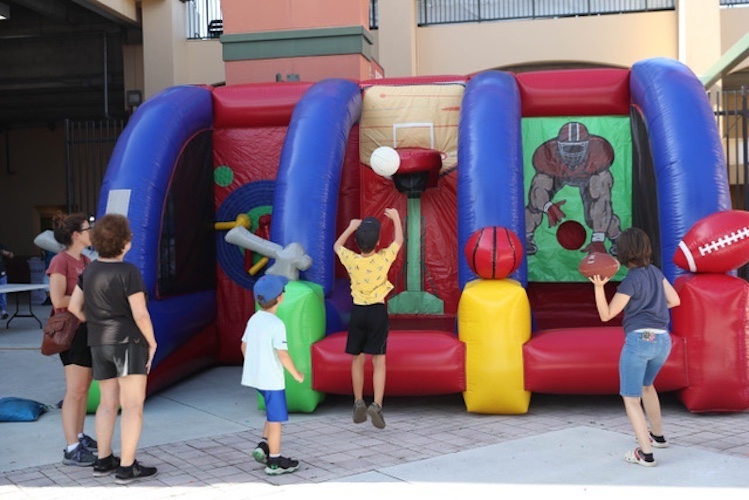
Minor league baseball clubs try to maximize attendance by keeping children busy so their parents can enjoy the game.
Often integrated into a town’s historic center, minor-league parks share the communal warmth of big-league venues. “[I]n the mind’s eye, the grass is emerald green, the dirt is raked to Buddhist perfection, and the air is redolent with popcorn, hot dogs, and joy,” wrote James Buckley, Jr., in America’s Classic Ballparks. The parks are compact, but the amenities are comparable—not only the obligatory cold beer and crowd-pleasing food, but often luxury suites for groups. With the MLB’s $37 average ticket price plus costlier parking and concessions, the big-league bill for a family of four can easily top $200; in the minors, they may spend a third of that or less.
Clean Family Fun
“Well over half our attendees come as families,” notes Andrew Seymour, general manager of the Palm Beach Cardinals. Minor-league parks cater to youngsters with play zones featuring bounce houses and even midway-worthy rides. Modern Woodmen Park in Davenport, Iowa, contains a Ferris wheel, bumper cars, and a 300-foot-long zipline. Dr. Pepper Ballpark in Frisco, Texas, has a lazy river by right field. First Horizon Park in Nashville, Tennessee, put a miniature golf course outside right field. Beyond their fixed seats, they offer terraces and green berms where adults and children can spread out and mingle informally.
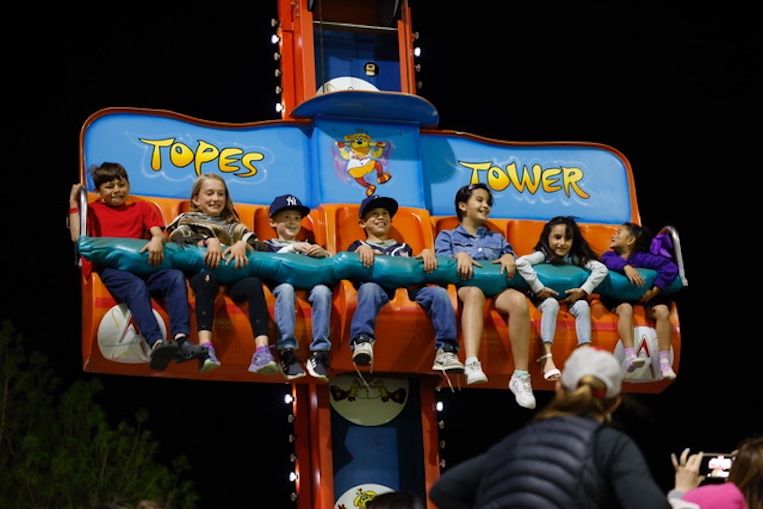
The Albuquerque Isotopes have carnival rides.
“Whenever we take our kids, we usually invite their friends and their parents along,” says Bernstein. “After Saturday games, kids get to run the bases, you’ll see more than a hundred out there.” Fireworks shows are increasingly common, appealing to all ages. The parks also double as venues for concerts and other community events, a tradition that started long before the Beatles played at Dodger Stadium and Comisky Park.
If the minors seem as much about spectacle as sport, it’s because, for most teams, the players are determined by their big-league affiliates (e.g., the St. Louis Cardinals for their Palm Beach namesake). “The major-league clubs make personnel decisions, so managers in the minors are trying to create a good entertainment product, not get a new arm for the bullpen,” explains Ben Hill, a veteran milb.com blogger who has been to every minor-league ballpark and viewed hundreds of games. “They appeal to fans with a variety of promotions—theme nights, contests, giveaway items. Every ballpark reflects its community.”
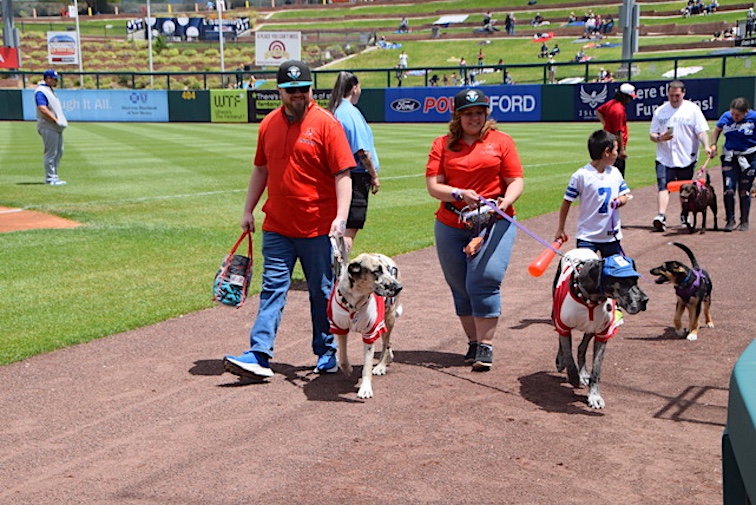
A dog parade before the game helps establish the atmosphere for a “Bark in the Park” event that dogs seem to like as much as children.
The ads on outfield walls are generally for local businesses, not national brands. Theme nights may support teachers, military service members, or public TV stations, welcome fans and their dogs (at Bark at the Park games), tout Taco Tuesdays, or showcase dinosaurs or Star Wars characters. The Palm Beach Cardinals have showcased pre-game yoga on the diamond, quilts made by local quilters, vintage cars owned by Florida collectors, and more. Beer lovers are regulars at its Thirsty Thursdays, seniors at Silver Sluggers Wednesdays—typical promotions for many teams. Kids receive school supplies at its Back to School Night, while paddles are handed out on Pickleball Night. But, admits Seymour, “the giveaway everyone wants is a bobblehead.”
Safe Environment for Kids
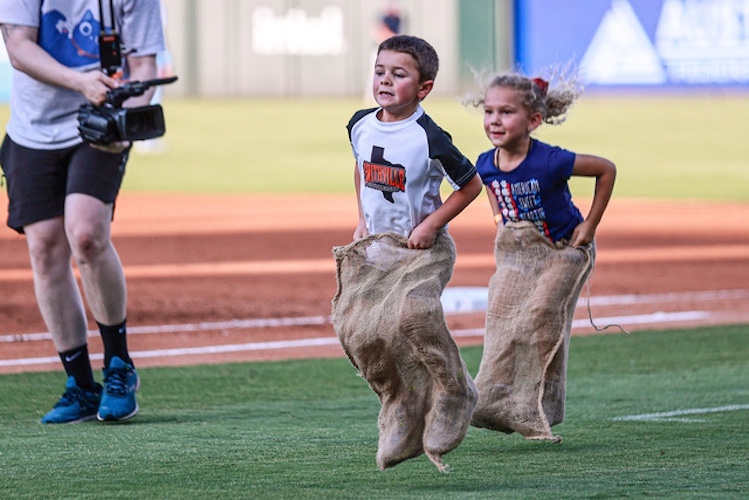
Minor league stadiums arrange a variety of pre-game contests to keep families having fun.
The crowd-rousing music also spans generations, from the 1908 anthem “Take Me Out to the Ballgame” to classic rock and hip-hop riffs. Similarly, fans can count on finding time-honored fare like hot dogs, burgers, and fries as well as extravagant variations and nods to local tastes. While they hope for the home team to load the bases, they can feast on loaded baked potatoes and nachos, sometimes with out-of-left-field toppings (e.g., Irish nachos, with potato fries, corned beef, green onions, and cheese sauce). They can choose not only mass-market beers but local craft brews; not just barbecue but barbecue from a hometown favorite, such as Rendezvous Barbecue at Memphis Redbirds games. Naturally, the Biloxi Shuckers’ park offers oyster po’boys. The Akron Rubberducks pioneered baseball’s answer to the turducken, a hot dog stuffed inside a bratwurst inside a kielbasa. An over-the-top ice cream sundae or mega-cheeseburger with bacon and chili may be served in a mini batting helmet, a burger or wiener between glazed doughnut halves instead of buns. Concession-wise, it’s about swinging for the fences.
Given the calorific eats and carnival vibe, a between-innings contest in which a life-size hot dog, taco, and ice-cream cone race in floppy costumes is par for the course, in the spirit of fun embodied by team mascots and their fellow cosplayers. Mascots are so popular that (like Marvel and DC superheroes) they have sidekicks, including special characters for theme nights.

Fairbanks Goldpanners mascot, Happy Boy, welcomes a local family to the game. Photo courtesy of Fairbanks Goldpanners
Wearing full-body costumes, these performers act as tireless greeters, cheerleaders, and avatars of fan affection for the team. “You’re the ambassador for the brand, the symbol,” explains Robbie the Cardinal, in character as the Palm Beach Cardinals mascot. “It’s physically demanding but also a lot of fun. It’s hard to be in a bad mood when you’re dressed like a huge bird and egging on the fans.”
Sometimes chosen by fan votes, team mascots and identities are expressions of place. The Myrtle Beach Pelicans, Lehigh Valley IronPigs, and Nashville Sounds are self-evident, but it takes a local to know that the Toledo Mud Hens were named for a native wetlands bird, the Amarillo Sod Poodles for a prairie dog nickname, or the Rocket City Trash Pandas for the Rocket Raccoon character in Guardians of the Galaxy Vol. 2—a nod to the aerospace industry in Huntsville, Alabama. In another instance of life imitating art, the Albuquerque Isotopes took their moniker from the team in The Simpsons’ hometown of Springfield, which relates to its cartoon nuclear plant as well as the birth of the atomic bomb at Los Alamos.
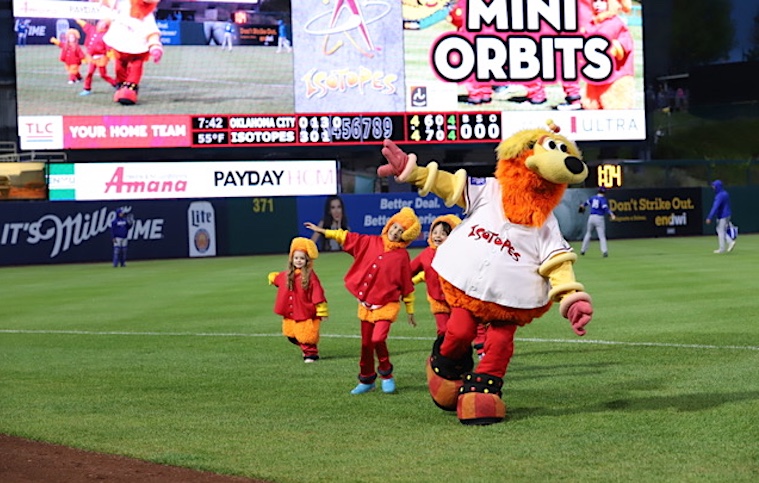
While players warm up for the game, young fans of the Albuquerque Isotopes play with Orbit, the team mascot.
Winning Isn’t Everything
The minor league season runs from about mid-April to early September, with some post-season play beyond that. There are 120 official minor league teams, four for each of the 30 major league teams (one for each of the four league tiers—AAA, AA, etc.), plus Rookie teams located at MLB spring training complexes in Arizona and Florida, as well as in the Dominican Republic. A number of independent teams exist in the same space; some of the best occupy their own orbit as members of MLB Partner Leagues, such as the Atlantic, Frontier and Pioneer Leagues. Plus, teams in non-partner independent federations such as the Empire, Pecos, and United Shore leagues. This adds up to a lot of minor league teams. Wherever you are in this country, you’re likely not far from one.
The oldest ballparks, dating from 70 to 100-plus years ago, have renovations that preserve vintage character. Who wouldn’t enjoy watching the Quad Cities River Bandits play in Davenport, Iowa’s Modern Woodmen Park, built in 1931, with the All-American backdrop of the Mississippi River, the Centennial Bridge, and a Ferris wheel? Almost all minor league parks now offer club levels and air-conditioned suites where friends, family, or business colleagues can gather, often for a three-figure total, including catered food (the major-league equivalent can cost thousands). Fans for whom the posh perches at Yankees and Mets games are out of reach can splurge on the suites at Maimonides Park, home of the Brooklyn Cyclones, which even boast views of Coney Island rides and the Atlantic.
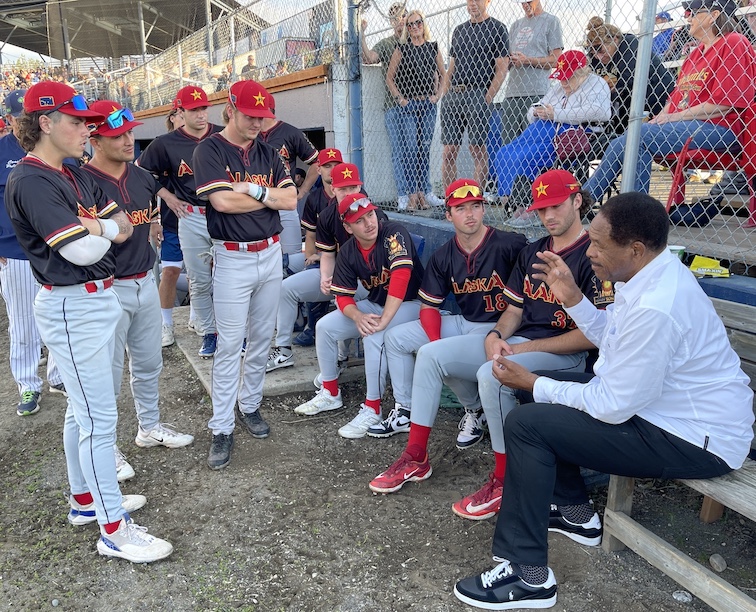
Major League hopefuls with the Fairbanks Goldpanners seek advice from Baseball Hall of Famer Dave Winfield, who returned to Fairbanks for the Midnight Sun game. The contest is played on the Summer Solstice and doesn’t start until 10 pm. The Goldpanners have sent over 200 players to the Major Leagues over the past 65 years. Photo by David DeVoss
Rebuilding With Baseball
Many cherish the old ballparks, but the majority of minor league parks were built in the twenty-first century. Often, they have been catalysts for economic redevelopment, with restaurants, breweries, and residential units cropping up nearby in new and renovated buildings.
Riding the success of the classic baseball movie Bull Durham, the Durham (NC) Bulls showed the way, building a handsome new home field in 1995, complete with the movie’s snorting bull sign atop the outfield wall. Repurposed tobacco warehouses and new office buildings soon flanked it.
In towns adapting to post-industrial decline, new stadiums can replace shuttered factories. As in the former textile town of Kannapolis, NC, on the site of the once-thriving Cannon Mills, where a new ballpark for the Kannapolis Cannon Ballers gave rise to apartments, a brewery, restaurants, and retail businesses. With their photogenic flourishes—the guitar-shaped scoreboard at the Nashville Sounds’ stadium, say, or the glittering bay views at the Pensacola Blue Wahoos’ home field—ballparks are attractive centerpieces for many towns.
Banana Ball

Men of Many Talents. The Savannah Bananas are excellent baseball players, but they realize they are in the entertainment business.
The most entertaining team in minor league baseball is surely the Savannah Bananas. Along with their stablemates and chief rivals, the Party Animals and the Firefighters, they’ve raised fan fun to a whole new level. Independent of MLB, they’re free to play what they dub Banana Ball, with modified rules (games limited to two hours, fan-caught fouls become outs, and so on) and constant high jinks. “Banana Ball was born out of the idea of making baseball more fast-paced, entertaining, and FUN,” explains Sam Bauman, media relations specialist for the team.
The “Dad Bod” Cheerleading Squad (a.k.a. the Man-Nanas) and a senior citizen dance team (the Banana Nanas) spoof sports norms. Players perform dance routines and gag bits between hits. The vibrantly attired teams put on a great show—but they’re also skilled athletes who play to win. The result has been a string of more than 200 sold-out games, including recent exhibition matches at big-league stadiums, including Boston, Houston, Philadelphia, and Cleveland, with more to come. The New York Times rightly dubbed them “a barnstorming sensation.”

Adults can enjoy a minor league game just as much as children.
MLB affiliates can’t copy the Bananas’ antics. But they know they also are in the entertainment business. Every season brings new crowd-pleasing elements as well as old mainstays. The ballpark food and drink get more varied, and the community outreach becomes more creative. As legions of fans know, minor league ball is one of the best values around. Baseball abides, embedded in our national DNA, a quintessentially American experience that overseas visitors are bound to enjoy.![]()
Jeff Book is an Alabama-based travel writer. His most recent story for EWNS described attractions along the Dixie Highway.

